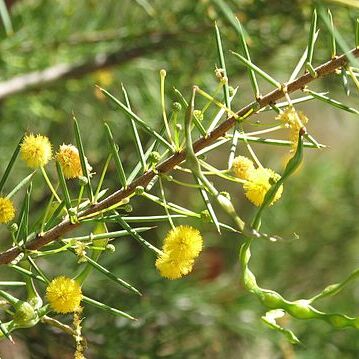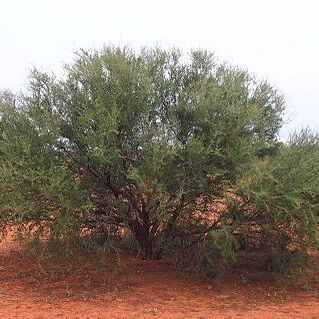Intricate often straggly shrub or tree normally 2–5 m high. Branchlets glabrous. Phyllodes fasciculate in groups of normally 2–6 on nodose dwarf lateral branchlets, single on new shoots, linear-subulate, usually pentagonal to compressed in section, mostly 1–5 cm long, usually c. 1 mm wide, pungent, with slender 1–2 mm long cusp, rigid, glabrous, rather prominently 5 (–7)-veined, usually sulcate between veins when dry. Inflorescences simple, 1–5 per axil; peduncles 1–3 cm long, glabrous; heads globular, densely 50–90-flowered, golden. Flowers 5-merous; sepals free, linear-spathulate. Pods raised over seeds and slightly to markedly constricted between them, curved to openly 1½-coiled, often twisted following dehiscence, normally to 10 cm long and 4–6 mm wide, subwoody to coriaceous or thinly crustaceous, glabrous. Seeds longitudinal, elliptic, 4–5.5 mm long; funicle encircling seed, bright yellow.



